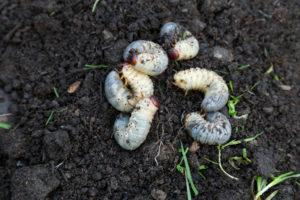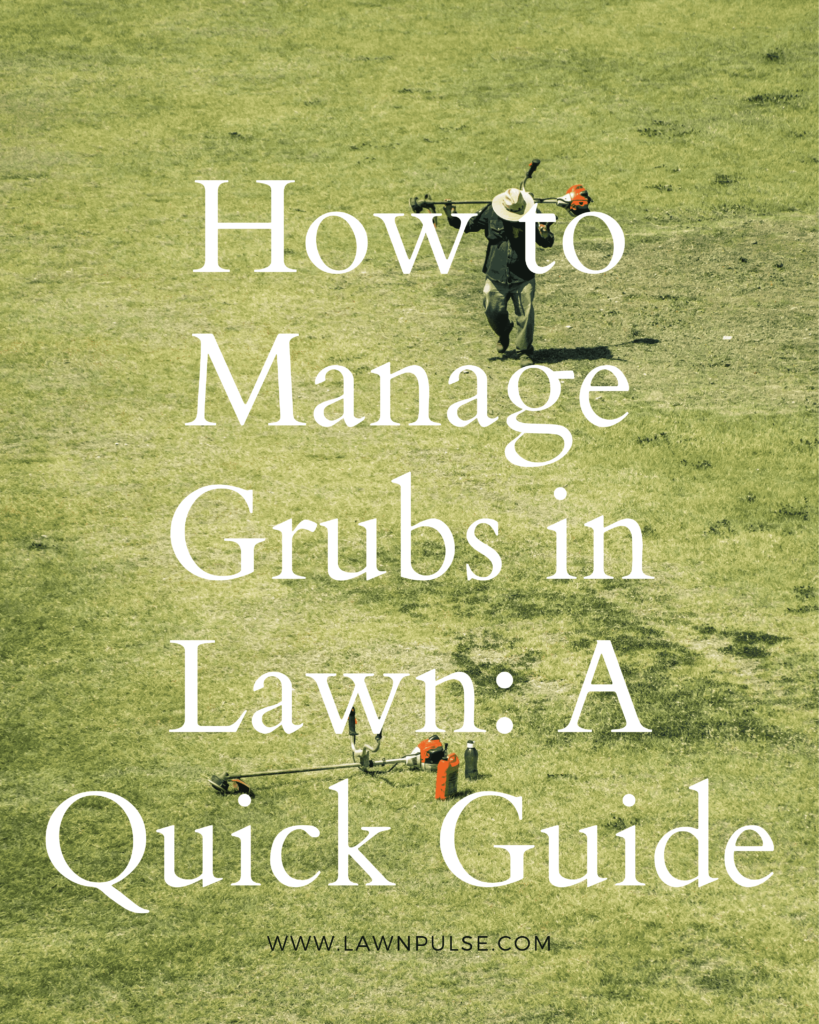Introduction
Dealing with grubs in your lawn can be a frustrating experience. These small, C-shaped pests have a voracious appetite for grassroots, leaving behind unsightly brown patches and weakened turf. In this comprehensive guide, we will delve into the world of grubs, exploring their lifecycle, signs of infestation, and effective management strategies.

picture of grubs
The Lifecycle of Grubs
1. Egg Stage
The lifecycle of a grub begins with the egg stage. Adult beetles, such as the Japanese beetle or the European chafer, lay their eggs in the soil during the summer months. Each female beetle can deposit hundreds of eggs, which hatch within a few weeks.
- Fact: Grubs hatch from eggs laid by adult beetles.
- Fact: Female beetles can lay hundreds of eggs in your lawn.
- Fact: The egg stage lasts for a few weeks.
2. Larval Stage
Once the eggs hatch, the young grubs enter the larval stage. During this phase, the grubs feed on grassroots, causing damage to your lawn’s root system. They remain in the soil, growing and molting several times, for several months.
- Fact: Grubs feed on grassroots, damaging your lawn’s root system.
- Fact: The larval stage can last for several months.
- Fact: Grubs molt multiple times as they grow.
3. Pupal Stage
After the larval stage, grubs enter the pupal stage, where they transform into adult beetles. Pupae are typically found deeper in the soil and are less destructive to your lawn. They remain in this stage for a few weeks before emerging as adult beetles.
- Fact: Grubs transform into adult beetles during the pupal stage.
- Fact: Pupae are less damaging to your lawn.
- Fact: The pupal stage lasts for a few weeks.
Signs of Grub Infestation
1. Brown Patches
One of the most common signs of a grub infestation is the appearance of brown patches in your lawn. These patches indicate that the grubs have been feasting on the grassroots, causing the affected area to die off and turn brown.
- Fact: Grub infestations result in unsightly brown patches in your lawn.
- Fact: The affected areas may die off and turn brown.
- Fact: Brown patches can spread if the infestation is left unmanaged.
2. Increased Pest Activity
Grubs in your lawn can attract other pests, such as raccoons, skunks, or birds. These animals are known to dig into the soil in search of grubs as a food source. If you notice an increase in pest activity, it could be a sign of a grub infestation.
- Fact: Grubs can attract pests like raccoons, skunks, or birds.
- Fact: Increased pest activity may indicate a grub infestation.
- Fact: Animals dig into the soil to feed on grubs.
3. Spongy or Wilting Grass
As grubs feed on grassroots, your lawn may develop a spongy texture or appear wilted. This is because the damaged root system cannot adequately absorb water and nutrients, resulting in weakened and unhealthy grass.
- Fact: Grub feeding can cause the grass to feel spongy underfoot.
- Fact: Wilting grass can be a sign of a grub infestation.
- Fact: The damaged root system affects the grass’s ability to absorb water and nutrients.
Managing Grub Infestations
1. Regular Lawn Maintenance
Maintaining a healthy lawn is the first line of defense against grubs. Proper watering, mowing, and fertilization practices promote strong grassroots, making your lawn less attractive to these pests.
- Tip: Water your lawn deeply and infrequently to encourage deep root growth.
- Tip: Mow your grass at the recommended height for your specific turf type.
- Tip: Use a balanced fertilizer to provide essential nutrients for your lawn.
- Tip: Aerating your lawn can improve soil compaction and root growth.
- Tip: Overseeding thin areas of your lawn can help fill in gaps and prevent grubs from finding exposed soil.
2. Biological Control
Introducing beneficial nematodes or certain bacteria, such as Bacillus thuringiensis (Bt), to your lawn can help control grub populations naturally. These organisms target and kill grubs, reducing their numbers over time.
- Tip: Beneficial nematodes can be purchased from garden centers or online.
- Tip: Follow the instructions carefully when applying nematodes to your lawn.
- Tip: Bt products specifically formulated for grub control are available.
3. Chemical Control
In severe cases or when other methods prove ineffective, chemical control options can be considered. Insecticides containing active ingredients like imidacloprid or halofenozide can provide effective control against grubs.
- Tip: Read and follow the instructions on the insecticide label carefully.
- Tip: Apply insecticides during the appropriate time of year for maximum effectiveness.
- Tip: Consider seeking professional assistance for the application of insecticides.
Conclusion
Grub infestations can wreak havoc on your lawn, but armed with knowledge and effective management strategies, you can regain control. By understanding the lifecycle of grubs, recognizing the signs of infestation, and implementing preventive measures, you can maintain a healthy and

